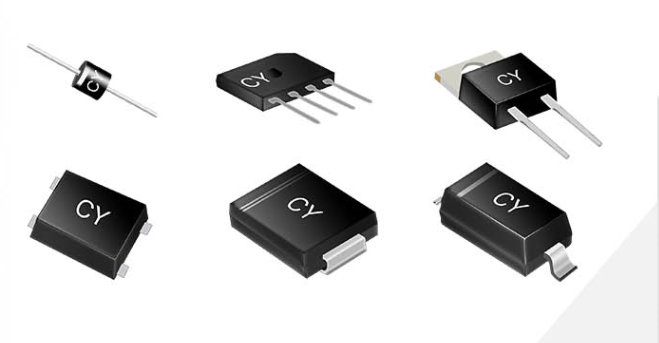Core Tip: At present, the touch screen basically uses a plug-in structure. The display module and the touch module of this structure are two relatively independent devices, and then the two devices are integrated through the back-end bonding process. The current touch screen is basically used. Plug-in structure, the display module and touch module of this structure are two relatively independent devices, and then the two devices are integrated through the back-end bonding process, but this relatively independent plug-in structure will affect the thickness of the product , Does not meet the development trend of increasingly thin touch display products. This resulted in the concept of an embedded touch screen. The embedded structure embeds the touch module in the display module, so that the two modules are integrated into one, instead of two relatively independent devices. Compared with the traditional plug-in structure, the built-in structure has the advantages that only two layers of ITO glass are needed, the material cost is reduced, the light transmittance is improved, and it is thinner and lighter; the touch screen module and the rear end of the TFT module are not required , To improve the yield rate; the touch screen group and TFT module are produced at the same time, reducing the transportation cost of the module. The embedded touch screen can be divided into two types: In-cell technology and On-cell technology.
1. Built-in touch screen structure
The definitions of the two technologies are slightly different, but the principles are similar. Both touch screens are embedded in the LCD module. In-cell technology integrates the touch screen under the color filter. Since the touch sensor is placed inside the liquid crystal panel and occupies a part of the display area, it sacrifices part of the display effect, and it also complicates the process and high yield is difficult to achieve . On-cell technology is to integrate a touch screen on the color filter, instead of embedding a touch sensor inside the liquid crystal panel, it is only necessary to form a simple transparent electrode between the color filter bottom plate and the polarizing plate, which reduces the technical difficulty. The main challenge of On-cell is the amount of noise coupled from the display to the sensing layer. Touch screen components must use sophisticated algorithms to deal with this noise. On-cell technology provides all the benefits of integrating a touch screen into a display, such as making the touch panel thinner and lighter and greatly reducing costs, but the overall system cost reduction is still far less than Incell technology. The embedded concept was first proposed by TMD in 2003, and then Sharp, Samsung, AUO, LG and other companies successively proposed this concept, and successively published some research results, but due to technical problems, none have been able to achieve commercialization. The embedded touch screen has been developed for nearly 10 years, and there is still a certain distance from commercialization, but the embedded touch screen represents the future development direction of the touch screen. Manufacturers who actively reserve embedded technology will compete in the future market. In a relatively advantageous position.
2. Multi-touch technology
In 2007, Apple ’s multi-touch function through projected capacitive technology provided an unprecedented user experience, reflecting the difference from other touch technologies at that time, making multi-touch technology a market trend. At present, multi-touch technology has only been able to realize two-finger zooming, three-finger scrolling and four-finger dialing, and it has developed to support more than 5 points of touch recognition and multiple input methods. To achieve more detailed control of screen objects and more freedom of direction development.
3. Hybrid touch technology
Although there are many types of touch technology at present, each technology has its own advantages and disadvantages, and no technology is perfect. In recent years, some people have begun to propose the concept of hybrid touch technology, that is, using two or more touch recognition technologies on a touch surface to achieve the purpose of complementing the advantages and disadvantages of multiple touch technologies. Currently, a hybrid touch screen based on capacitive and resistive touch screens has been developed. The touch screen can be operated by a stylus and finger, and supports multi-touch, etc., which significantly improves the recognition efficiency of the touch screen.
With the continuous improvement of users' requirements for touch technology, a single touch technology will certainly not meet people's needs, so hybrid touch technology will definitely become one of the future development directions of touch technology.
4. Tactile feedback technology
The continuous development of touch display technology has brought people convenient operation methods and good visual effects. At the same time, it has neglected to give users a tactile feedback during touch operations. At present, there is not much research on haptic feedback technology. Immersion in the United States has launched the haptic feedback technology called Forcefeedback. This technology uses a mechanical motor to generate vibration or motion. It can simulate haptic effects such as beating, object dropping and damping motion. More tactile feedback technology. Senseg's E-sense technology uses the principle of bioelectric fields to generate a tactile feedback. The development of more realistic haptic feedback technology can bring new touch experience to users, so haptic feedback technology is also a direction for the development of touch technology in the future.
Superfast Recovery Rectifier is the most popular use for diodes. Fast rectifiers convert alternating current (AC) to direct current (DC). They only allow one-way flow of electrons. Rectifiers have many uses and are often found serving as components of high-voltage direct current power transmission systems and DC power supplies. Fast rectifier diodes feature very low reverse recovery time, very low switching losses and low noise turn-off switching.

Super Fast Rectifiers,Fast Recovery Rectifiers,Super Fast Recovery Rectifier,Ultra Fast Rectifier Diodes
Changzhou Changyuan Electronic Co., Ltd. , https://www.cydiode.com